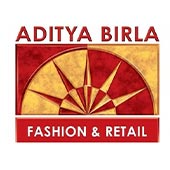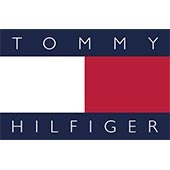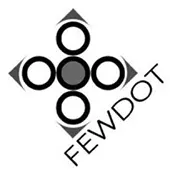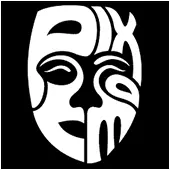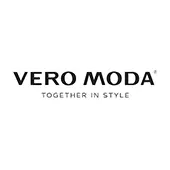Whether you are looking to become a fashion stylist, a fashion communicator, or simply want to expand your knowledge of the fashion world, this diploma has everything you need to get started. The course covers a wide range of topics, including fashion history, the psychology of colour, and the art of styling, to provide students with a strong foundation in the industry.
In addition, you will learn about the various communication channels used in the fashion industry and the skills needed to effectively communicate your ideas and vision to others. With hands-on training opportunities, real-world experience, and the guidance of industry experts, this diploma is an excellent investment in your future.
So, whether you are an aspiring fashion professional or just have a passion for fashion, the Diploma in Fashion Styling & Communication is the perfect starting point for a career in this exciting and dynamic field.
What is Fashion Styling:
Fashion styling involves a range of tasks such as studying current trends, understanding customer demands, maintaining contacts with suppliers and vendors, etc., all aimed at helping create fashionable outfits for models or customers. It's the job of the fashion stylist to come up with ideas for new styles, coordinate wardrobe selections for photo shoots or films, organize outfits for major events and press conferences, create magazine editorial spreads, etc.
Over time fashion styling techniques have evolved significantly due to technological advancements that have allowed machines to do much of what was traditionally done by hand giving stylists more opportunities when it comes to creating one-of-a kind looks. This also means that today's stylists need specialized training in order to be successful in the industry.
Understanding the Correlation Between Fashion Styling and Communication:
Fashion styling and communication are closely intertwined disciplines that go hand in hand. When it comes to creating effective visuals, stylists need to understand how to visually communicate a message or idea to potential customers. Similarly, effective communication requires an understanding of fashion trends, colours and materials that can be used to help create an overall look or aesthetic.
At its core, fashion is all about self-expression. By studying fashion styling & communication, students learn how different elements such as fabric selection, colour palettes and silhouettes can be used to create looks that express emotion, tell stories or evoke certain feelings for the viewer. This knowledge is key for successful marketing campaigns or product launches that capture the attention of the target audience.
Admissions Now Open For Diploma in Fashion Styling & Communication For 2025 Batch
What is Diploma in Fashion Styling & communication Course?
A diploma in fashion styling & communication provides comprehensive training on the art of visual expression. Students learn about image building and developing a consistent brand aesthetic for their clients, as well as understanding and utilizing key trends within the fashion sector. This includes working with fabrics, cuts, colours and prints, constructing garments from patterns and fabric manipulation techniques.
Students also gain insight into marketing strategies behind creating collections and campaigns that engage customers through various communication outlets such as advertising, exhibitions, media campaigns and digital platforms. Furthermore, they gain experience in budgeting and time management skills while exploring effective ways to communicate ideas through photography and film. Finally, students will discover how to use fashion styling effectively to create both tactile pieces of clothing and visual stories which help them express themselves through their work.
The course is divided into two main areas:
Creating Fashion - Styling & Creative Direction
-
Styling:
The students obtain a global knowledge about styling, fashion, art and photography so they can use photo format as the most basic and important way to express fashion images.
-
Creative Direction:
The students are introduced into fashion films, possible fashion shows and creative direction so they are able to understand and work with fashion video formats.
-
Communicating Fashion - Marketing, Advertisement. Styling & Communication
The students explore the concept “fashion brand” and learn how to develop various techniques of Journalism, both marketing and advertising plans analyzing the fashion sector, its market and environment.
Projects
-
Project Editorial - Group Project
Each group develops a fashion editorial using items provided by the brands; the fashion editorial workshop includes working with professionals: photographer, makeup & hair and models.
Still Life -Individual Project
Each student creates a fashion still life with his/her own shopping and photo resources.
-
Communication Project - Group Project:
Each group works with one collaborating brand (or a group of them). They develop the re-branding, corporative image, marketing plan and advertising plan, and also all the contents needed (spots, editorials, blogs...).
Individual Project:
Each student creates their own brand and develops the corporative image, marketing plan and advertising plan. They also produce all the contents needed (spots, editorials, blogs...).
Admissions Now Open For Diploma in Fashion Styling & Communication For 2025 Batch
Skills Gained from Fashion Styling & Communication Course:
The fashion industry has become increasingly competitive, making it necessary for aspiring professionals to gain additional knowledge and skills. A Diploma in Fashion Styling & Communication course is the perfect way to get ahead in the industry as it offers an in-depth look into various aspects of fashion from design principles, construction methods and marketing strategies to audience engagement and intellectual property law. If you are wondering what specific skills you will develop through this course, read on for an overview of 10 key skills gained from a Fashion Styling & Communication Course.
Here is a list of top 11 skills that you gain through this fashion designing course.
Design Principles:
Through this course, students will learn about the fundamentals of design such as colour theory, harmony, and balance. They will be able to identify different trends and apply these principles when creating visuals that stand out from the competition.
Construction Methods:
When it comes to fashion styling, it's important to have a basic understanding of construction methods so that garments can be put together in a professional manner. This course covers areas such as pattern cutting which allows students to effectively modify or create their own designs with complete confidence.
Fabric Manipulation:
By learning how to manipulate fabrics through sewing techniques such as pleating and draping, graduates can give garments more texture or structure without compromising comfort or style.
Pattern making:
Becoming proficient at drafting patterns is an important skill that helps designers bring their visions into reality while presenting their collections professionally at trade shows or press events. During the program students are taught the fundamentals as well as advanced techniques for properly constructing patterns used in ready-to-wear clothing lines or couture house collections.
Technical sketching/illustration:
While computer software allows fashion professionals to create highly precise renderings of their designs, it still remains essential for designers to develop drawing skills by hand which is covered during the program curriculum through lectures as well as workshop activities where participants get practice sketching out ideas on paper before putting them into production.
Audience Engagement:
Knowing your target audience is crucial when working within the fashion industry as you need to be aware of their needs and preferences in order for your products/campaigns/stories to be successful. This course teaches students how to build relationships with their customers by understanding their interests and adapting their message accordingly.
Marketing Strategy:
Graduates will also gain knowledge on effective marketing tactics and strategies so that they are able to promote their services more effectively both online and offline. These include analysing customer data, setting realistic goals, measuring ROI (return-on-investment) etc..
Budgeting:
Understanding financial budgeting is vital when running any type of business as it enables one to calculate costs associated with projects accurately so there are no surprises at the end of each stage! Through this course students learn how best manage their finances by developing cost estimates which can help them make informed decisions while keeping profits high!
Time Management:
Being able to manage time efficiently is an essential skill for anyone who wants to pursue a career within the fashion industry as deadlines are usually tight and fast approaching! Students will develop strategies on how best break up tasks over long periods of time while prioritising based on urgency in order stay on top of deadlines!
Presentation Skills:
Knowing how present your work professionally another key aspect is covered during this Diploma course! Students will practice creating visuals that create maximum impact by incorporating resources such as images/textiles/illustrations which can help them build strong portfolios!
Intellectual Property Law:
It's important for fashion professionals know understand intellectual property law so that they don't unintentionally infringe upon someone else's copyrights or trademarks! In addition, graduates also learn about procedures involved in registering designs/products with legal bodies such as OHIM (Office for Harmonization in Market Internalization)!
Trends & Style Analysis:
Understanding current trends coupled with developing one's own aesthetic style is another skill one must possess when working within this field! During this training program students have access detailed information regarding popular styles around world which allows them craft stories campaigns or products easily stand out competitions!
Branding Strategies:
Knowing how create and maintain strong brands is essential any successful fashion business! Through this course, students will have opportunity explore various concepts related branding including creating logos, developing customer loyalty/satisfaction surveys etc.
Business acumen:
The diploma course not only covers knowhow related directly to fashion but also gives insight into how businesses operate within this sector ranging from customer service best practices plus financial management strategies such budgeting for long-term growth or setting up retail operations abroad.
Network building:
By engaging with professionals both locally within workshops arranged by faculty members as well internationally via sponsored trips earlier courses have organized oversea visits with suppliers/manufacturers located overseas. These opportunities enable students build connections outside of their normal social circles broadening up prospects when it comes job hunting following graduation from program.
A Diploma in Fashion Styling & Communication course gives aspiring professionals all the tools they need succeed within sector while gaining valuable insights into many facets fashion enabling them confidently pursue roles after completion courses!
Diploma in Fashion Styling & Communication Course Content & Syllabus:
The syllabus of this diploma course includes both theoretical aspects as well as practical components. Students will learn about different aspects of the fashion world such as garment construction, pattern making, draping techniques as well as art direction concepts. They'll also get first-hand experience working with fabric swatches and analysing new silhouettes which allows them to gain an in depth understanding of textures, colours and silhouettes used in today's market.
Students enrolled in this specialised fashion course even delve into topics such as cultural history topics related to textiles or marketing strategies aimed at promoting the growth potential within emerging markets . All these varying concepts play an important role when it comes to understanding how styles take shape and evolve over time. Some other modules included within this course include:
| 1st Semester |
2nd Semester |
| Fashion Psychology |
Visual Merchandising |
| Fashion Illustration |
Fashion Journalism |
| Communication |
Fashion Photography |
| Fashion Styling |
Fashion Forecasting |
| Project: Communication Project |
Project: Editorial Project |
Fees Structure, Eligibility Criteria, and Admissions Process:
Fees Structure:
The fee for Diploma in Fashion Styling & Communication ranges from 1.75 - 2 Lakh per year. There are various scholarships and student aid available for eligible candidates.
Eligibility Criteria & Duration Of Course:
Prospective students who have obtained a passing grade in their 10th or SSLC (Secondary School Leaving Certificate) are eligible to apply for the Diploma in Fashion Styling & Communications Course.
This one-year program is divided into two semesters, offering students the opportunity to gain comprehensive knowledge and skills within the field of fashion.
Admission Process:
Prospective students may visit our branch to obtain an application form. Our counsellors will provide all the relevant information and assist in the application process.
Alternatively, applicants can fill out an online form by clicking here and one of our counsellors to get in touch with them about taking the admission process forward. Taking the first step towards achieving your dream of becoming part of this creative field is as simple as submitting your application form!
With our streamlined admissions process, we are committed to helping you pursue your dreams and make them come true. So don't wait - take that first step today by filling out the application form. It's easy and straightforward - let's start making it happen!
Admissions Now Open For Diploma in Fashion Styling & Communication For 2025 Batch
Benefits of Pursuing a Diploma in Fashion Styling & Communication Course:
Pursuing a diploma in fashion styling and communication can offer several advantages to students interested in pursuing a career in the fashion industry. By enrolling in this course, students gain access to experienced teaching staff, hands-on learning experiences, and industry resources - all of which are essential for success in the field.
The diploma in fashion styling & communication helps prepare individuals for entry level positions within a wide range of related industries such as retail stores, media houses , magazines , advertising agencies , film studios etc ; enabling them to capitalize on their creativity while contributing towards building successful businesses . Upon successful completion of this diploma in fashion styling & communication, an individual will glean additional skills such as;
Hands-on experience: Pursuing a diploma in fashion styling and communication provides students with hands-on experience in various aspects of the fashion industry, such as designing, styling, and executing fashion shoots.
Networking opportunities: The fashion industry is highly networked, and a diploma in fashion styling and communication provides students with the opportunity to network with industry professionals and build connections that can be valuable in their future careers.
Development of creative skills: The course encourages students to think creatively and develop their own unique style and approach to fashion styling.
Exposure to fashion photography: Students learn about fashion photography and how to create compelling images that capture the essence of the clothing and accessories they are styling.
Knowledge of fashion history and theory: The course provides students with a deeper understanding of fashion history and theory, and how they have shaped the industry.
Better understanding of the fashion industry: Students gain a comprehensive understanding of the fashion industry, including the various roles and responsibilities within it.
Improved communication skills: The course focuses on developing strong communication skills, which are essential for success in the fashion industry.
Personal growth and development:Pursuing a diploma in fashion styling and communication provides students with the opportunity to grow and develop their skills and knowledge, and to challenge themselves in new and exciting ways.
Tips for Successful Completion of the Diploma in Fashion Styling & Communication Course:
Completing a diploma in fashion styling and communication is an ambitious undertaking, but it can be very rewarding for those driven to succeed. Here are some tips for making the most of your studies and ensuring successful completion of the program:
Get organized: Implement a system for keeping track of all assignments, tests, presentations, and other class requirements. Create a calendar or use productivity software to help you stay on top of due dates, so you don't fall behind.
Prepare ahead of time: Start projects early if possible so you can have plenty of time to ask questions and make revisions before deadlines. Waiting until the last minute will only cause unnecessary stress when trying to complete everything on time.
Study regularly: Spend at least 30 minutes each day reviewing course material, so it doesn't pile up at the end of semester; this also reinforces what you've learned in class. Consider joining a study group with classmates to make learning more enjoyable and productive.
Participate in extra-curriculars: Take advantage of opportunities offered by the program such as field trips, guest lectures, exhibitions, workshops, networking events etc that can enrich your academic experience outside the classroom walls. Extracurricular activities provide invaluable insight into working within fashion industry from those first-hand familiar it.
Utilize resources available: Connect with alumni who have graduated from same program inquire about experiences, internships , job postings or feedback critiques designs; faculty members usually open doors wide range information regarding designers/brands particular areas expertise (luxury goods vs couture ) that may otherwise overlooked which could prove immensely beneficial success later down line !
Job Opportunities and Career Prospects after Completion of the Diploma in Fashion Styling Degree:
The job market for those with a diploma in fashion styling & communication looks bright. Graduates can explore staff roles at fashion houses, freelance opportunities, or their own entrepreneurial ventures. With the right experience and qualifications, they can work as designers, stylists, patternmakers, costume designers or visual merchandisers. Plus, digital channels are providing many avenues for self-promotion today. To make the most of these opportunities, graduates should focus on creating an impressive portfolio demonstrating creativity and technical know-how. With this in hand, they're sure to secure their dream job!
Here are some of the job prospects and career paths you can consider:
Fashion Designer: Someone who creates and produces original designs for clothing and accessories. A diploma course in fashion styling & communication helps graduates recognize trends, create looks, and understand the fundamentals of starting a design line.
Stylist: They help make people look their best by selecting clothes, hairstyles, makeup, and accessories to achieve a desired look. With the knowledge gained from a diploma course in fashion styling & communication, they can make informed decisions when it comes to creating stylish ensembles that meet clients' needs.
Patternmaker: These professionals use measurements and calculations to create patterns for garments that can be used by other designers or production teams. A diploma course in fashion styling & communication provides graduates with the skills to execute detailed technical drawings accurately.
Costume Designer: Working on productions for theatre, film or television often involves creating costumes for characters. Graduates of a diploma course in fashion styling & communication have the creative and technical skills necessary to come up with costume designs that adhere to the brief given by directors.
Visual Merchandiser: Their job is to arrange store displays to entice customers into buying products while also upholding brand standards. They would benefit from a diploma course in fashion styling & communication as this teaches them how to present items effectively and communicate visually through art direction techniques.
Writer/Journalist for Fashion Publications: Writing about fashion topics requires an eye for detail as well as staying up-to date on trend reports and industry news. Graduates of a diploma course in fashion styling & communication are equipped with the writing skills needed to craft engaging content that readers will find interesting and informative.
Photographer for Fashion Publications: Capturing high quality images (still or moving) of clothing or models requires skilful framing techniques combined with creative lighting solutions. The creative photography module within a diploma course in fashion styling & communication provides graduates with the expertise needed for this job role.
Social Media/Marketing Manager for Fashion Brands: This role involves overseeing campaigns across different online platforms such as Instagram, Facebook or Twitter while also closely monitoring performance metrics such as follower growth or post engagement rate. Those who have taken a diploma course in fashion styling & amp;communication understand how important impactful visuals are when it comes to social media marketing strategies alongside text-based content pieces.
Personal Shopper for Individual Clients: This role requires someone who is able to quickly assess what type of style/brand suits their clientele's tastes best; having taken a Diploma course in fashion styling & communication means they'd have acquired valuable insight into current trends and designer labels making ideal candidates fit for this position.
Costume Designer for Theatre, Film or TV Productions: Creating costumes for films/television shows involve taking elements from sketches made by art directors and applying them practically onto physical garments; graduates who've received training during their Diploma Course in Fashion Styling & Communication will possess numerous craftsmanship skills needed here ranging from sewing complex details onto fabric pieces right through to texture research for locating rare materials used during period pieces etc...
Textile/Fabric Researcher: Those with a Diploma Course in Fashion Styling & Communication would know very well where to source fabrics from (locally based suppliers or globally recognized mills)perfectly suited for specific types of designs whilst bearing in mind eco-friendly materials etc...
Although much depends individual experience level , these just few potential types jobs those who complete diploma course may pursue their official embark journey fashion styling industry !
Admissions Now Open For Diploma in Fashion Styling & Communication For 2025 Batch
What makes IIFT the Best Diploma in Fashion Styling & Communication college in Bangalore?
- IIFT is known for its world-class faculty, who have a long history of preparing you to excel in their university exams. Every year IIFT's student body celebrates top ranks at the prestigious Bangalore University examinations - establishing itself as one of India's best Diploma in Fashion Styling & Communication colleges. As a matter of fact, Our you have grabbed 9 out of 10 Gold Medals at University Level.
- Our faculty is the cornerstone of our success! We boast experts from every aspect of fashion industry, providing knowledge and expertise to help you excel in fashion. Our teachers are true masters of their craft - allowing for an enriching learning experience unparalleled elsewhere.
- Our faculty's expertise is further enhanced through one-on-one mentorship. This personalized guidance allows us to provide the best possible support and ensure successful outcomes for our students.
- Get ready to explore the fashion industry in a brand-new way! Our 100% placement assistance program open doors for you into some of the most prestigious and sought-after brands. It's an incredible opportunity to kickstart your career with all the right connections - don't miss out on this amazing chance!
- With cutting-edge technology and emphasis on hands-on experience, our Fashion course will prepare you to excel in the competitive fashion world. Get ready for a fashionable future!
- Unleash your inner designer and get ready to bring your designs to the world stage! At Fashionite - IIFT's annual fashion show, you'll have opportunities to showcase what makes you unique with creations all of your own. It's time for you take centre-stage in a dazzling display!
- Affiliated to Bangalore University
- In 2010, IIFT made history when they entered the Limca Book of Records for putting on India's largest fashion show. Featuring a total of 82 graduating designers and 542 designs, this spectacular event was held in Bangalore with the support of Ministry of D& eacute;fense from Government of India; making IIFT the first ever Fashion Technology Institute to be sponsored by them!
Value Added Course for Free:
IIFT has taken their Diploma in Fashion Styling & Communication program to the next level with the addition of a value added free course on Computer Aided Design (CAD). With this offering, students can apply cutting-edge technology to their studies and gain an understanding of how CAD is used in fashion design. This course focuses on practical applications, helping students gain proficiency in CAD software and develop confidence working with these tools. From creating designs and prototypes to samples, this free course provides the industry-leading knowledge that fashion styling professionals need to succeed in today's competitive marketplace.
* The Duly Filled in Form Should Be Sent To admissions@iiftbangalore.com





